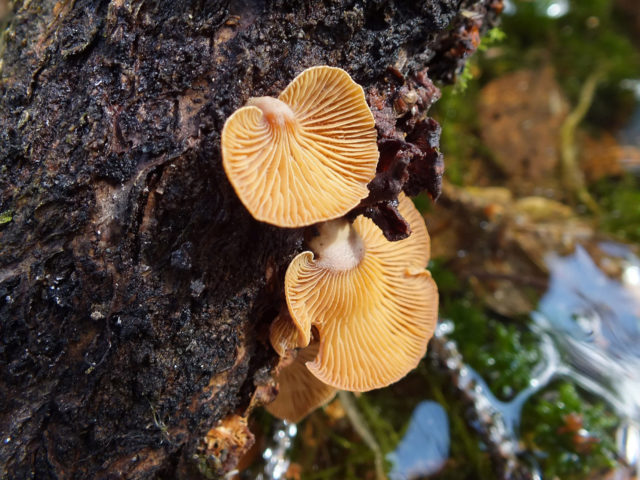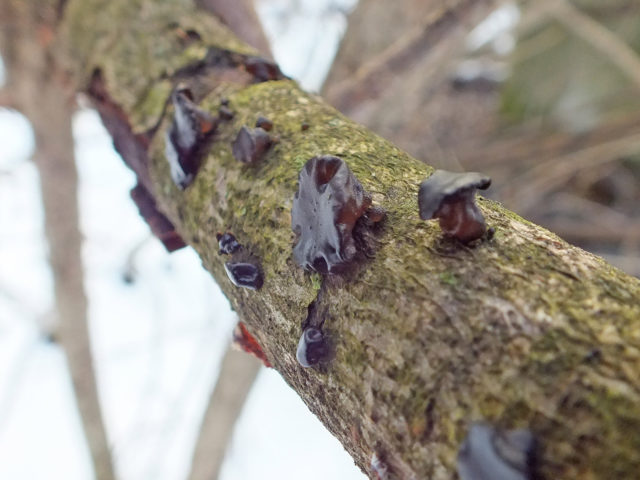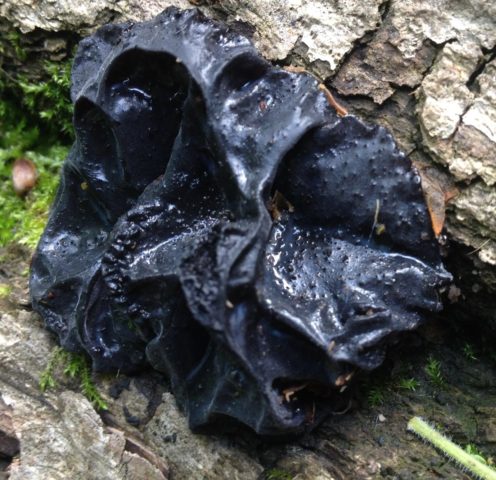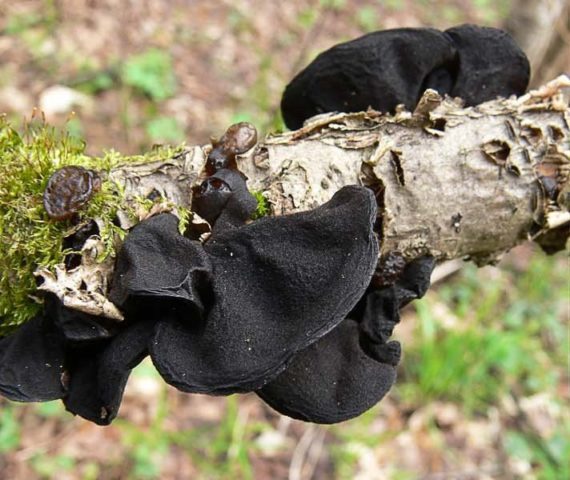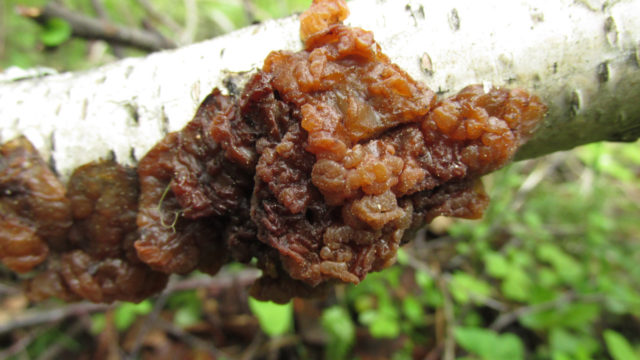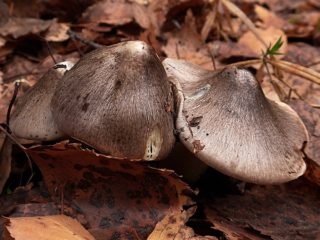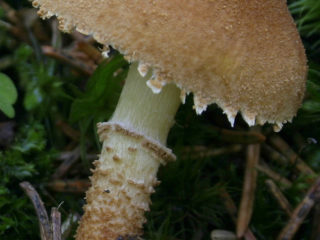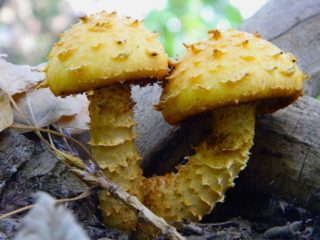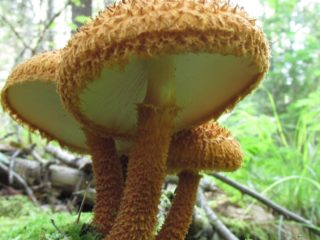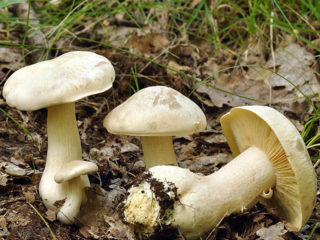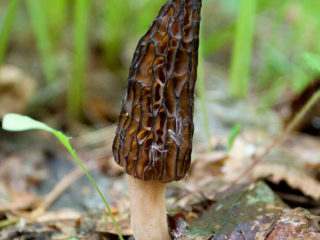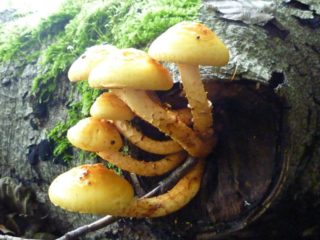Content
Compressed exidia is a poorly studied mushroom, which, perhaps, only avid mushroom pickers know about. What are these gifts of the forest, it is worth finding out before the start of the "quiet hunt".
What does Exidia look like
The mushroom resembles a closed shell with a barely noticeable stem 2-3 cm long. The fruit body is erect, rounded, leaf-shaped, compact, disc-shaped, or in the form of an inverted cone. As a rule, the surface of a young exidium is compressed smooth, but over time it becomes folded and wrinkled.
Color - from yellow and amber shades to red-brown, and when dry, the pulp begins to turn black. The edge of the fruiting body is wavy-wrinkled. It is characterized by an expressionless taste and smell.
Basidia are tetrasporous with a buckle at the base and long cylindrical sterigmas, reaching sizes of 10-13 × 7-10 microns. Spores 12-14 × 3-4 μm, thin-walled, hyaline, allantoid with a pronounced apex.
Is the mushroom edible or not
Mushrooms of this genus have several varieties, some of which are edible. However, this specimen belongs to the group of inedibles, but is not considered poisonous.
Where and how it grows
You can meet this species on dead deciduous wood that grows along rivers and lakes.
The variety is widespread throughout Russia, and the favorable time for their growth is from July to September. However, in some parts of the country with a mild climate, this specimen continues to grow continuously.
For example, in the southern region of Russia, where frosts reach a maximum of -10 degrees in winter, fungi do not die. And at above-zero temperatures, they continue to develop and form spores. In those regions where winters are more severe, for example, in the European part, exsidia winters successfully and begins to grow immediately after the thaw.
In dry weather, the fruit bodies dry out, acquiring a black tint, turning into hard thin crusts, the viability of which is several years in herbarium conditions. However, with heavy rain, the mushrooms return to their original form.
Doubles and their differences
There are several types of mushrooms that are considered twins of the Compressed Exidia:
- Exidia glandular - resembles compressed in shape and color. Nevertheless, the glandular has a more saturated black color, and small warts can be seen on the surface of the fruiting body. This doppelgänger is believed to be an edible and delicious mushroom.
- Exidia truncated - similar in color and shape. You can distinguish a double from a real one by the presence of a velvety lower surface and small warts on its fruiting body. They are classified as inedible.
- Exidia in full bloom - has a similar color and rounded flattened fruiting bodies. However, it will not be so difficult to distinguish a twin from a compressed exsidium, since most often it grows on a birch. This variety is never found on willow. It is an inedible species.
- Leafy shiver - is similar in shape and color of fruit bodies, but this species is quite rare and grows on stumps. Experts classify it as inedible and do not recommend using it for food.
Conclusion
Compressed exsidia is found in almost every forest. However, for a mushroom picker, it is of no value.
